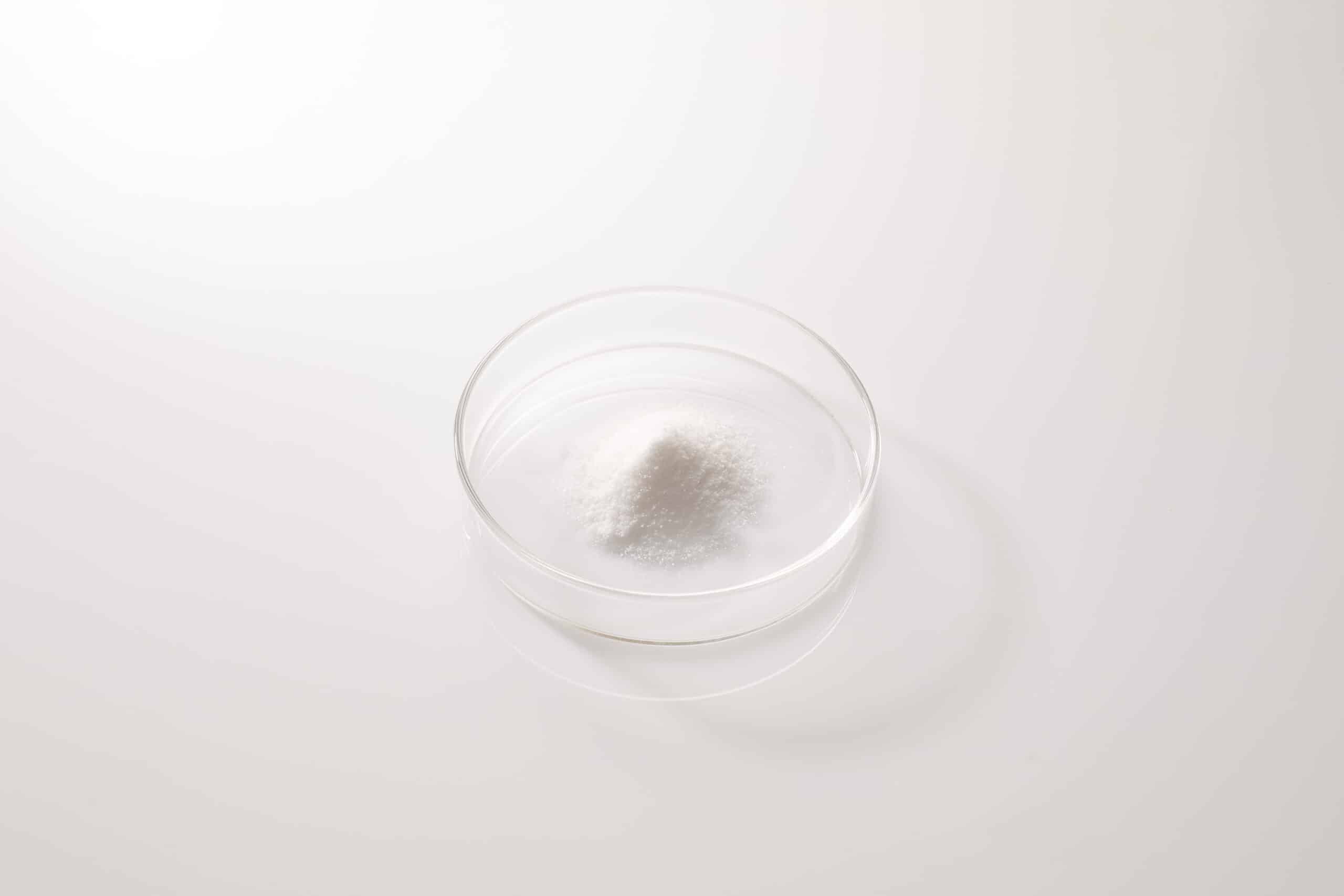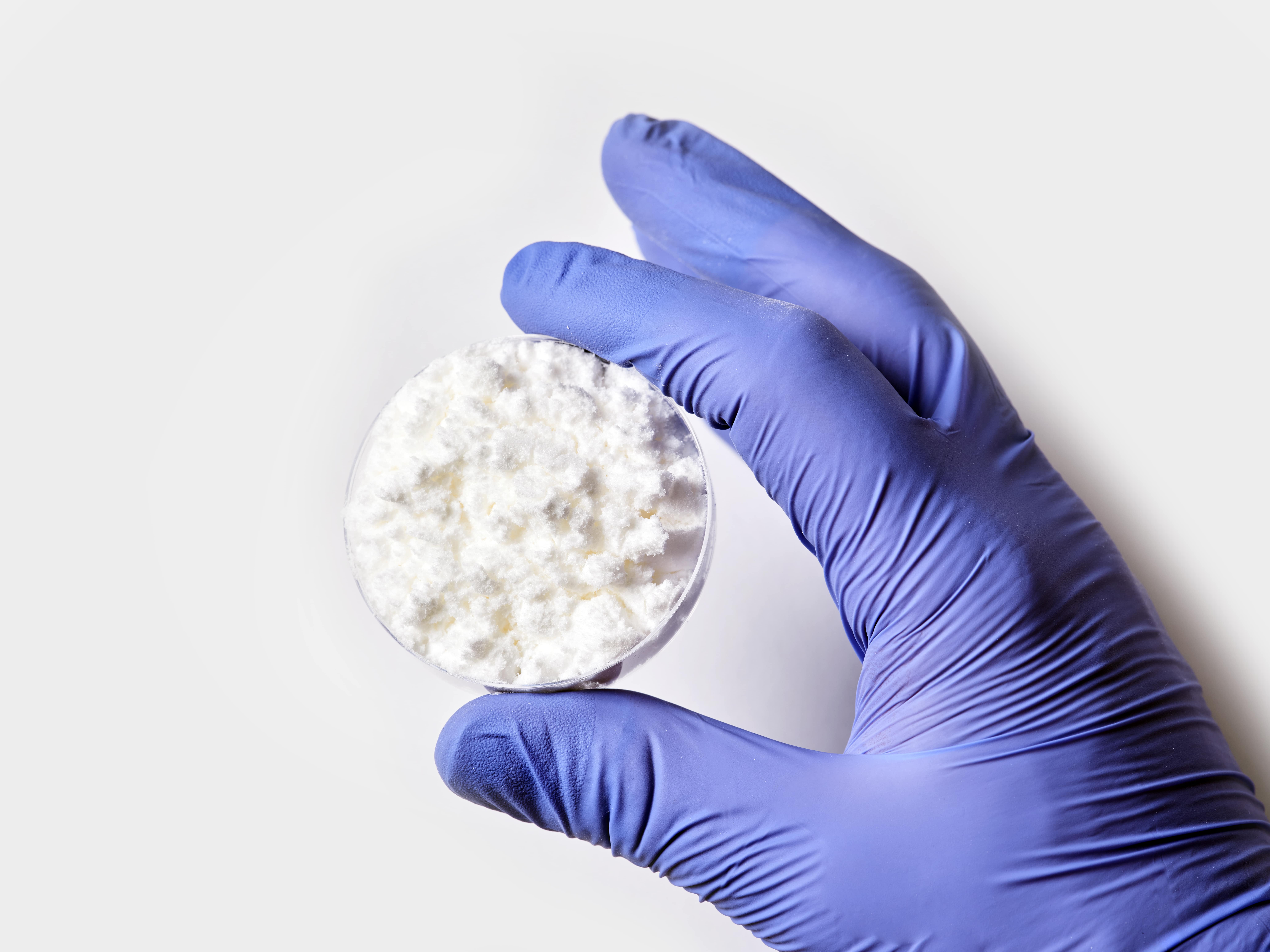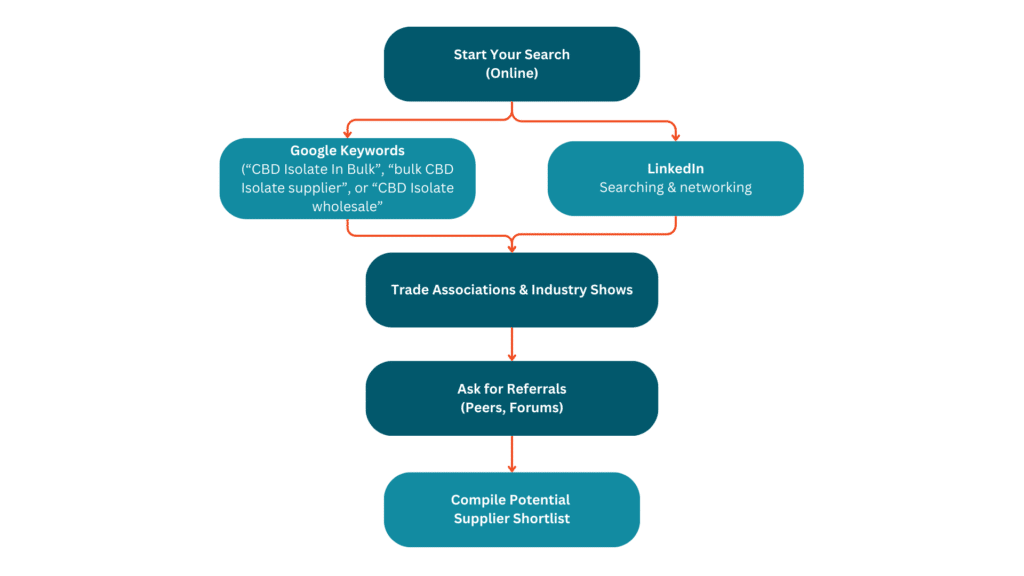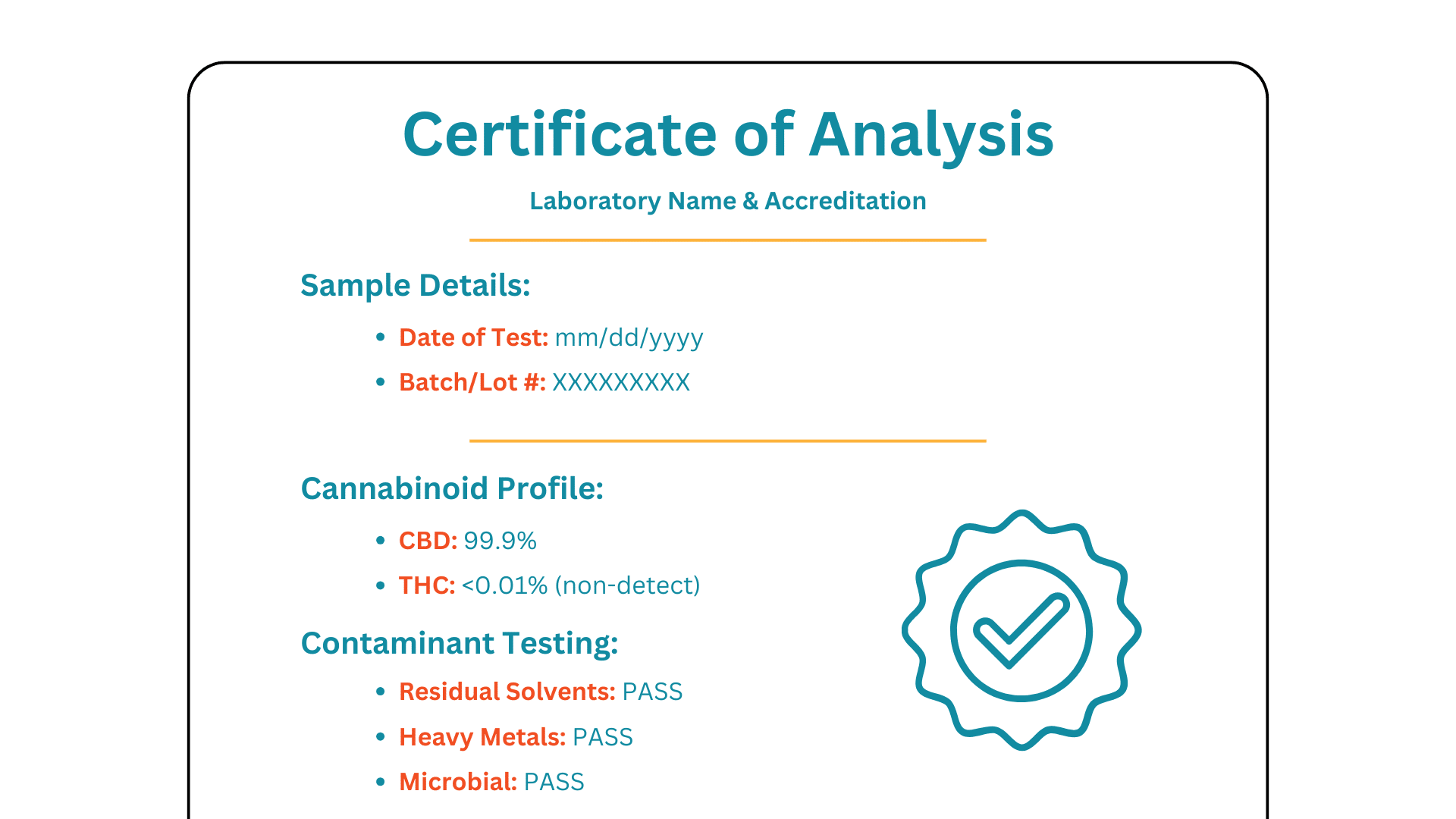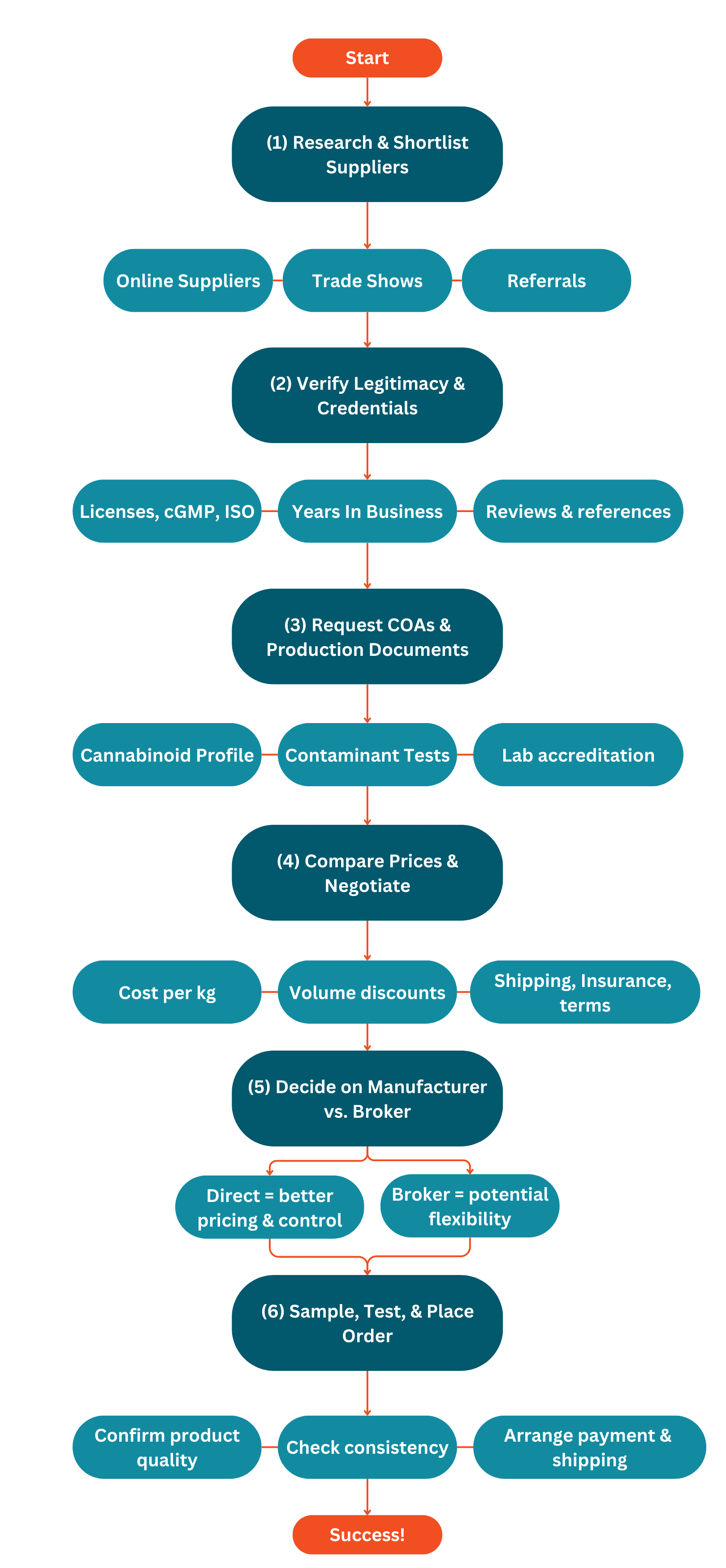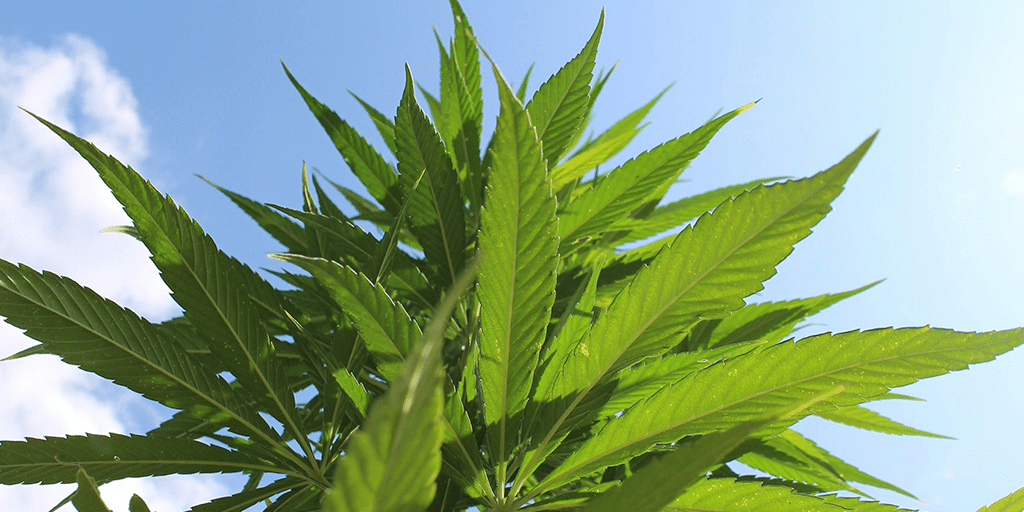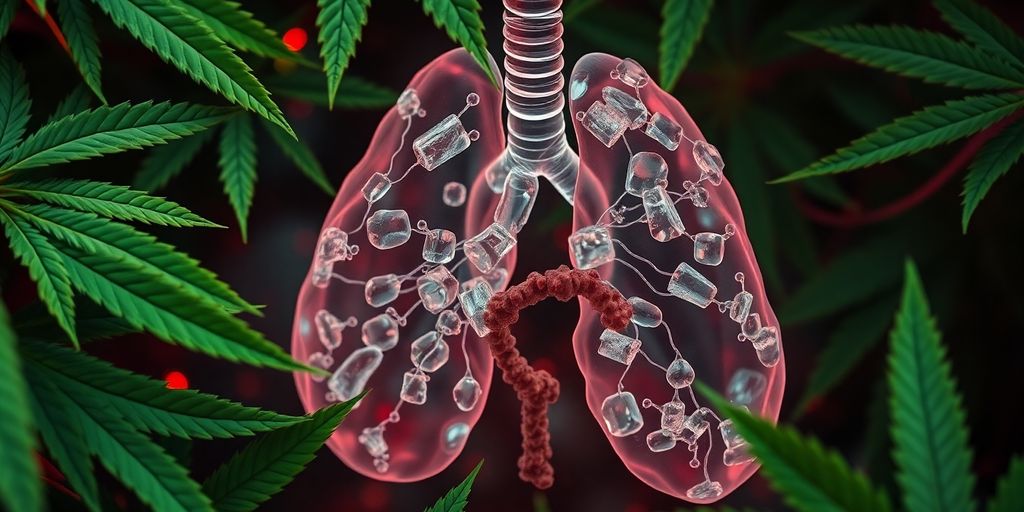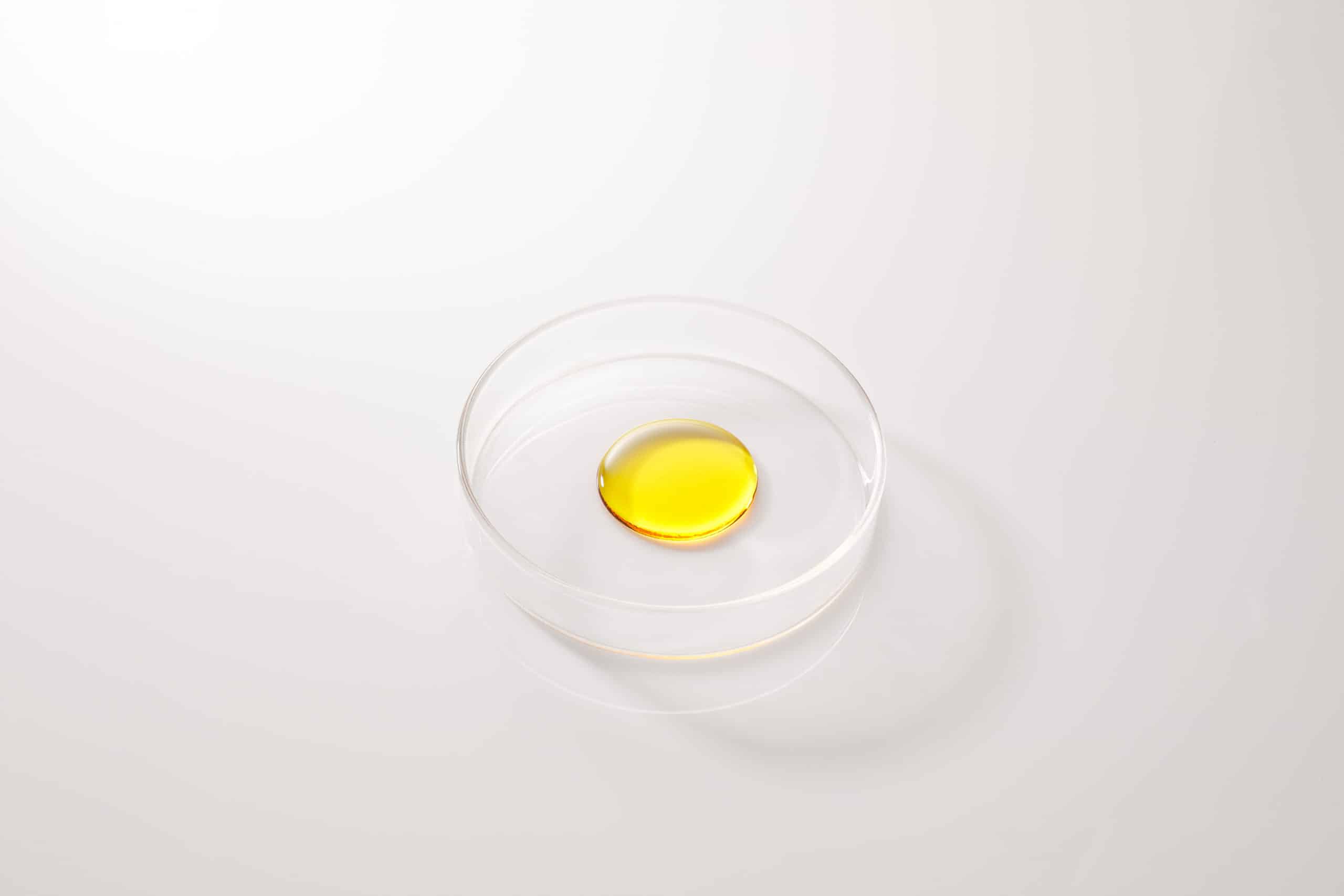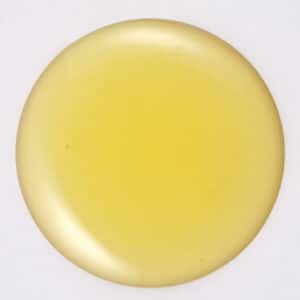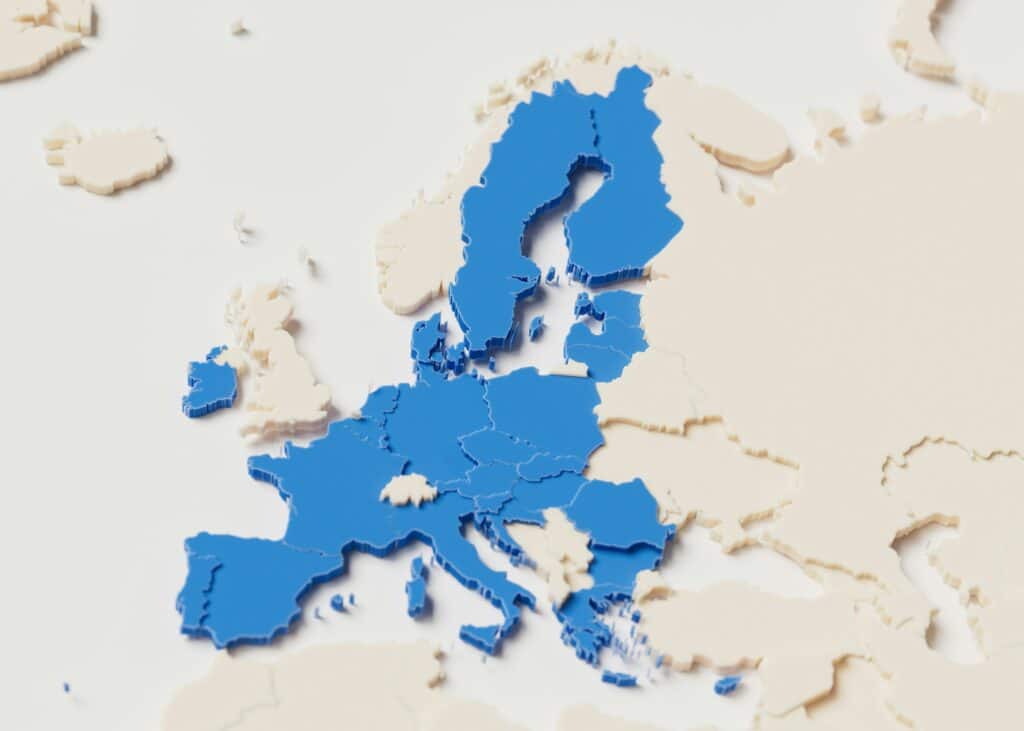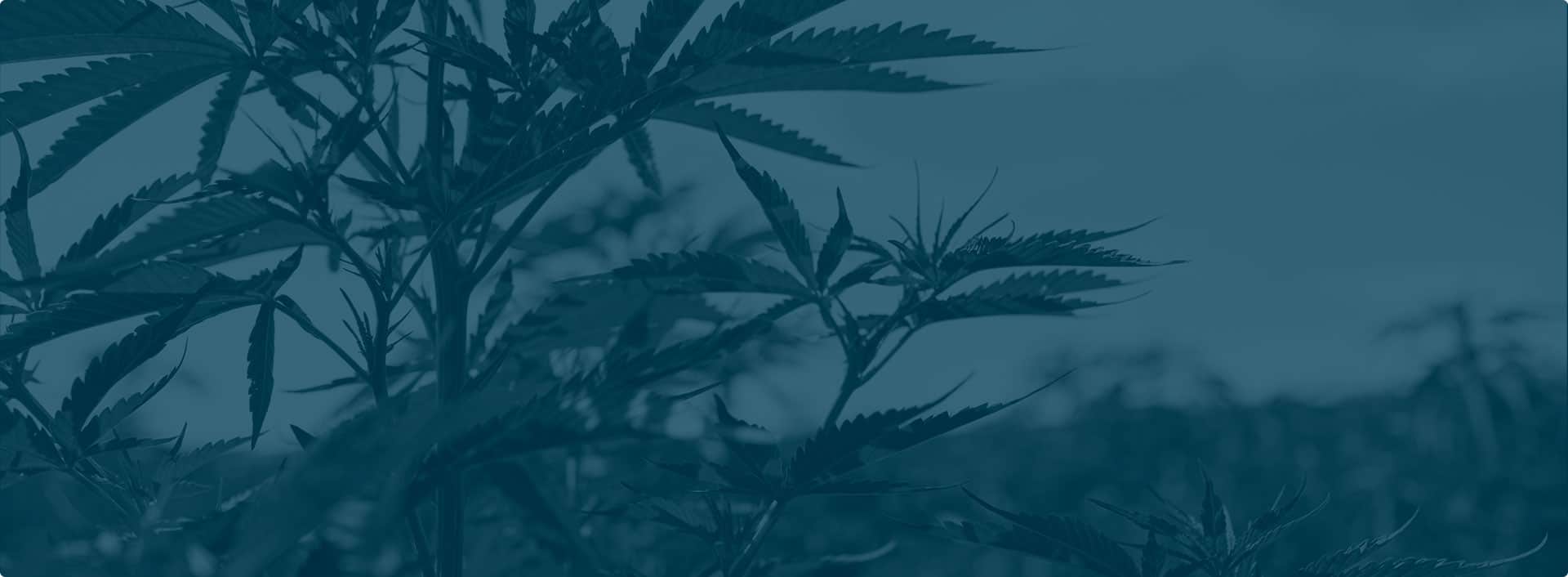Bulk CBN, particularly in its isolate form, is gaining traction as manufacturers and formulators look to harness the unique benefits of cannabinol. In this comprehensive guide, we explore what CBN isolate is, why quality is paramount, and how to source high-quality, wholesale CBN from reputable suppliers. Whether you’re planning to develop vape cartridges, tinctures, edibles, or topicals, understanding the sourcing process is key to ensuring a consistent and potent product.
1. Understanding CBN Isolate
CBN isolate is a purified form of cannabinol that has been separated from all other compounds found in the hemp plant. In its crystalline form, it is highly concentrated, offering manufacturers a reliable way to incorporate cannabinol into various products with precise dosing.
What is CBN?
Cannabinol (CBN) is a cannabinoid that forms as THC degrades over time. Known for its potential therapeutic properties—such as promoting relaxation and supporting sleep—CBN is especially valued in products designed for wellness and comfort.
Bulk CBN vs. Other Cannabinoid Extracts
Unlike full-spectrum extracts or distillates, CBN isolate provides a pure, singular cannabinoid without interference from other compounds. This makes it ideal for:
- Precise formulation requirements
- Products where a neutral flavor or color is desired
- Applications that demand consistency across batches
Manufacturers looking to buy wholesale CBN need to ensure they are sourcing an ingredient that not only meets potency specifications but also adheres to strict quality standards.
2. Why Quality Matters in Bulk CBN
The benefits of high-quality CBN isolate extend beyond potency. Quality control impacts product safety, regulatory compliance, and consumer trust. Here’s why quality is crucial:
- Purity and Potency:
High-quality CBN isolate typically boasts purity levels upwards of 98–99%. Purity ensures that no unwanted compounds—such as THC or contaminants—compromise the product. - Consistency Across Batches:
Reliable manufacturing processes guarantee that every batch of bulk CBN meets stringent specifications, which is essential for product formulation. - Regulatory Compliance:
With evolving regulations around hemp-derived products, quality control and third-party lab testing (documented through Certificates of Analysis, or COAs) help manufacturers stay compliant with local, state, and federal guidelines. - Consumer Trust:
When your product is made with a verified, high-quality ingredient, it builds confidence among consumers. This is especially important in markets where product integrity is critical.
3. The Extraction & Purification Process for CBN Isolate
Understanding how CBN isolate is produced can help you appreciate the importance of quality control. The production process typically includes several key stages:
- Hemp Cultivation:
High-quality hemp is the foundation for a premium extract. Cultivation involves strict agricultural practices to produce hemp rich in cannabinoids. - Extraction:
Advanced methods, such as supercritical CO₂ extraction or ethanol extraction, are used to isolate cannabinoids from the hemp biomass. - Purification:
The raw extract undergoes further refinement through techniques like distillation and crystallization. These processes remove impurities, resulting in a crystalline form of CBN isolate. - Lab Testing:
Multiple rounds of testing ensure that the extract meets potency and purity standards. An accredited laboratory conducts tests to measure cannabinoid levels and screen for contaminants like heavy metals, pesticides, and residual solvents. - Certification:
A Certificate of Analysis (COA) from a third-party lab confirms the product’s quality. This documentation is vital for both regulatory compliance and consumer transparency.
4. The CBN Isolate Sourcing Ecosystem (Diagram)
Before you begin the sourcing process, it’s helpful to view it as an interconnected ecosystem. This diagram illustrates the various elements that work together in sourcing high-quality bulk CBN.
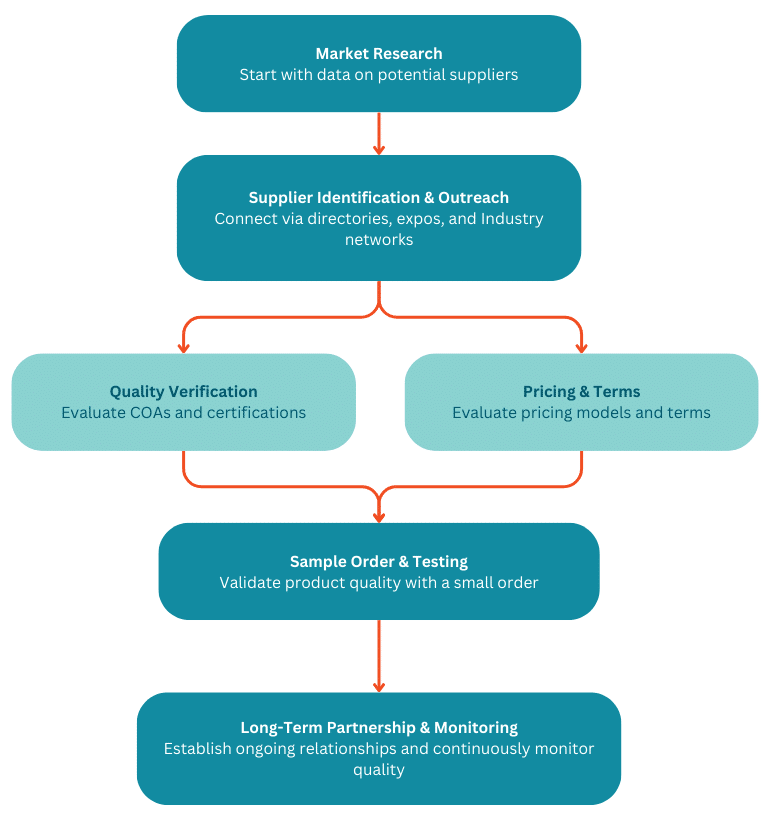
5. Quality Control & Certifications
Quality control is a non-negotiable aspect when sourcing bulk CBN. Look for suppliers who enforce rigorous quality control measures, including:
- Multi-Stage Lab Testing:
Testing at various stages of production ensures that every batch of CBN isolate meets the desired specifications. Reliable suppliers publish COAs that detail the cannabinoid profile and confirm the absence of harmful contaminants. - Certifications:
Certifications such as cGMP (Current Good Manufacturing Practices), OSHA standards, and ISO compliance signal that the supplier adheres to high manufacturing standards. These certifications offer peace of mind for formulators and end users alike. - Transparency:
A reputable supplier will be forthcoming with documentation and open about their processes. Look for companies that provide easy access to lab reports and detailed product information.
6. How to Source High-Quality Wholesale CBN
Sourcing high-quality CBN isolate involves a systematic approach. Here are the key steps to ensure you choose the right supplier for your needs:
Step 1: Conduct Thorough Research
Begin by exploring online directories, industry publications, and trade shows. Focus on suppliers that specialize in hemp-derived cannabinoids and have a strong reputation in the market.
- Online Search:
Use targeted keywords like “bulk CBN,” “CBN isolate,” and “wholesale CBN” to find potential suppliers. - Industry Networks:
Connect with industry peers, attend hemp expos, and participate in online forums. Personal recommendations and peer reviews can be invaluable.
Step 2: Verify Supplier Credentials
After compiling a shortlist, verify each supplier’s credentials:
- Licensing and Certifications:
Confirm that the supplier holds all necessary licenses and certifications and adheres to regulatory guidelines. - Track Record:
Evaluate the supplier’s history and customer reviews. A long-standing reputation in the industry is a positive indicator of reliability.
Step 3: Request Documentation
Before making any commitments, request detailed documentation:
- Certificates of Analysis (COA):
Ensure the COA is up-to-date and provided by an accredited third-party laboratory. The COA should confirm the isolate’s purity (typically 98–99% CBN) and show results for contaminants. - Manufacturing Processes:
Ask for an overview of their extraction and purification processes. Understanding these details can help assess the overall quality of the product.
Step 4: Compare Pricing and Terms
Evaluate the supplier’s pricing structure and order terms carefully:
- Volume Discounts:
Many suppliers offer tiered pricing for bulk orders. Make sure you understand the cost per unit (or per kilogram) for different order volumes. - Shipping and Logistics:
Reliable and fast shipping is essential for consistent production. Verify if the supplier offers tracking-enabled shipping and whether they have a robust logistics network. - Payment Terms:
Clarify payment conditions, including any down payments, net terms, and return policies for defective batches.
Step 5: Request a Sample Batch
Before placing a large order, it’s wise to request a sample batch:
- Testing Samples:
Run your own tests or send the sample to an independent lab to verify that the product meets the promised specifications. - Evaluate Consistency:
Check the consistency of the isolate’s texture, color, and purity. A reliable supplier should provide uniform quality across batches.
7. Checklist for Evaluating Wholesale CBN Suppliers
When evaluating potential suppliers for CBN isolate, use the following checklist to guide your decision:
- Quality Documentation:
- Up-to-date COA from an accredited lab
- Detailed breakdown of cannabinoid content and contaminant levels
- Certifications:
- cGMP, ISO, and OSHA compliance
- Any additional organic or handling certifications
- Reputation:
- Established track record in the industry
- Positive customer reviews and references
- Pricing & Terms:
- Transparent pricing structures with volume discounts
- Clear payment terms and reliable shipping practices
- Customer Support:
- Responsive customer service
- Dedicated account managers for ongoing orders
A practical way to compare potential suppliers is by using a Supplier Evaluation Matrix. This matrix allows you to score and compare suppliers across key criteria side by side.
Supplier Evaluation Matrix
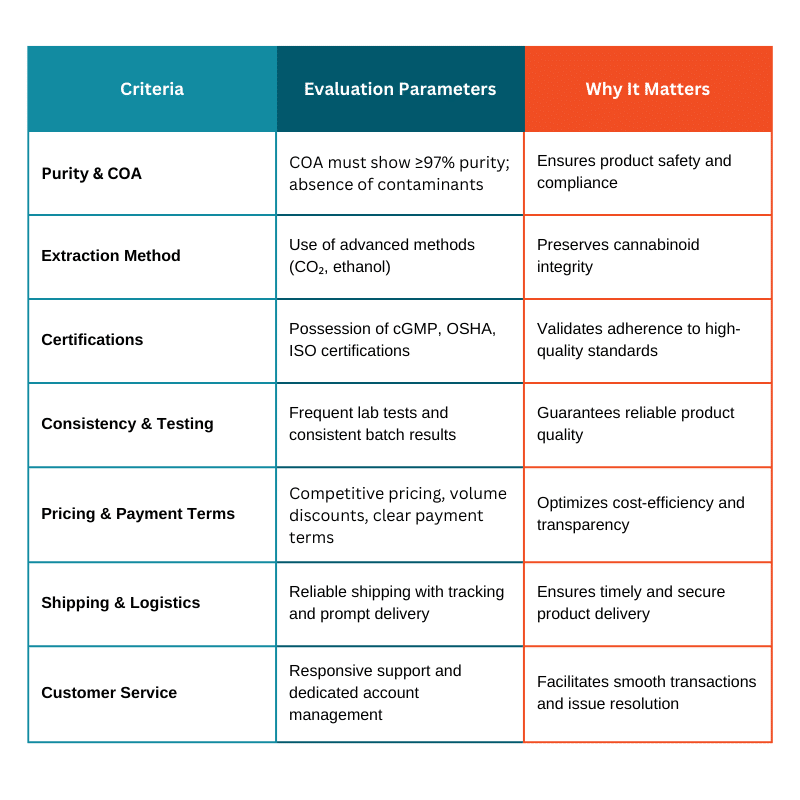
8. Making the Final Decision
Once you’ve gathered all necessary information, compare the suppliers side-by-side. Look for the best balance of quality, cost, and reliability. Key factors include:
- Product Quality:
Ensure that the CBN isolate meets the required purity and potency levels. - Supplier Reliability:
Consider the supplier’s history, responsiveness, and consistency in delivering quality products. - Value for Money:
The cheapest option is not always the best. Evaluate the overall value, including quality, customer service, and shipping efficiency.
9. Best Practices for Long-Term Success
Sourcing high-quality CBN isolate is not a one-time task but an ongoing process. Here are some best practices for maintaining a reliable supply:
- Regular Audits:
Periodically review supplier performance and update your internal quality benchmarks. - Build Relationships:
Establish strong communication channels with your supplier. A good relationship can lead to better pricing, faster resolution of issues, and early notifications about product updates. - Monitor Regulatory Changes:
Stay informed about any changes in hemp and cannabinoid regulations to ensure ongoing compliance. - Continuous Testing:
Even after establishing a relationship, continue to test each batch to verify that quality remains consistent.
10. Conclusion
Sourcing high-quality CBN isolate requires diligence, research, and a commitment to quality. By understanding the extraction process, enforcing stringent quality control, and following a systematic sourcing process, you can secure a reliable supply of bulk CBN that meets your formulation needs.
Whether you’re a manufacturer looking to incorporate wholesale CBN into your product line or a formulator seeking to maintain the highest standards, this guide provides the roadmap you need to make an informed decision. With detailed flowcharts, checklists, and best practices, you now have the tools to navigate the complex world of hemp-derived cannabinoid sourcing.
Investing in quality at every step—from cultivation and extraction to supplier evaluation—will ensure that your products are safe, effective, and compliant with industry standards. Embrace these strategies to build a strong, reliable supply chain and gain a competitive edge in the evolving market of hemp-derived products.
Remember, quality and consistency are the foundations of any successful product. If you’re actively sourcing wholesale CBN Isolate, the team at GVB Biopharma would be more than happy to help. Contact our sales team here.
This guide is designed to empower you with the knowledge and tools necessary to confidently source high-quality CBN isolate. By following these steps and leveraging our visual aids, you can optimize your supply chain and ensure that your products remain at the forefront of quality and consistency in the hemp-derived market.

